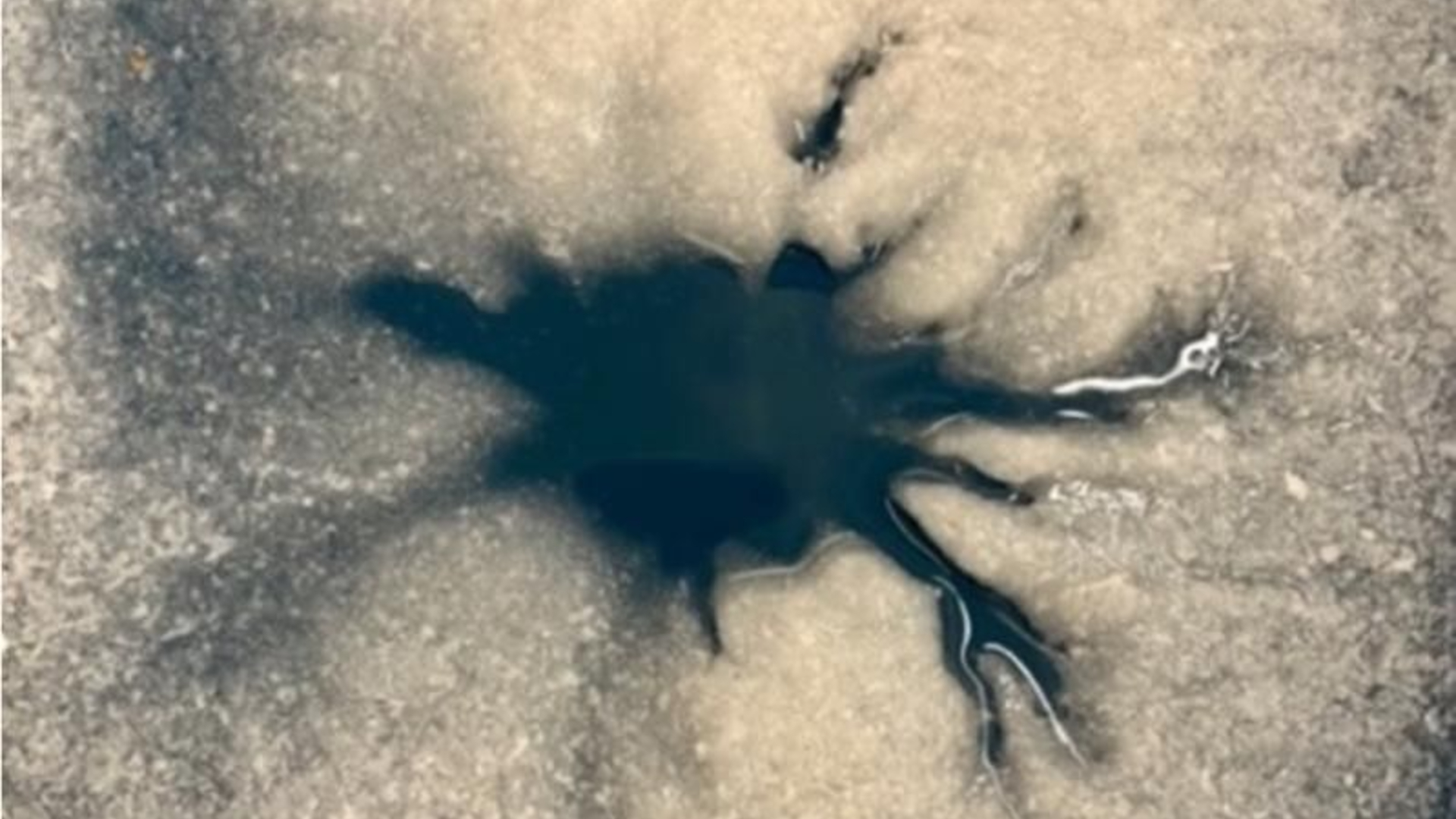Disney's Space 220 restaurant has hidden nods to NASA history

Space 220, Disney's new immersive restaurant offering guests a chance to dine in Earth orbit, opened this week after a five-year countdown. The new addition to the Mission: SPACE pavilion in Epcot Center at the Walt Disney World Resort in Florida blends state-of-the-art technology with a fine dining menu, providing an eating experience like nothing else on Earth.
Guests dining at Space 220 board a "Stellarvator" to ascend 220 miles (355 kilometers) to the Centauri space station, where they are treated to a panoramic view of the planet below. The effect is engaging, providing just a "taste" of what the astronauts on the International Space Station experience every day, just with better food.
Given Epcot's proximity to Cape Canaveral and that the Patina Restaurant Group, which operates Space 220, is owned by the same company that runs Kennedy Space Center Visitor Complex, one might assume that Disney turned to NASA for help bringing its guests to space.
"There was no consultation with NASA," Seth Rose, general manager of Space 220 for the Patina Restaurant Group, said in an interview with collectSPACE.com. "The WDI [Walt Disney Imagineering] Imagineers were really the brainchild behind the Space 220 concept."
"I think there was some research that was done in terms of tethering the elevator to Earth and how to get to space, but I don't believe NASA was involved in that process. It was more of a creative solution from the WDI Imagineers," said Rose.
Even without NASA being directly involved, Space 220 includes several subtle (and not-so-subtle) nods to real spaceflight and its history. Here are several details to look for on your next trip to Space 220.
The human body in space: 6 weird facts
Breaking space news, the latest updates on rocket launches, skywatching events and more!
Going up
Guests dining at Space 220 enter the restaurant by boarding a "Stellarvator." The space elevator follows a vertical track at 10,000 mph (16,100 kph) as riders enjoy the sights out viewports showing the rise from Epcot and approach to the space station.
Of course, that is all a simulation; guests do not actually go into space, but that does not mean the lift is pure fantasy.
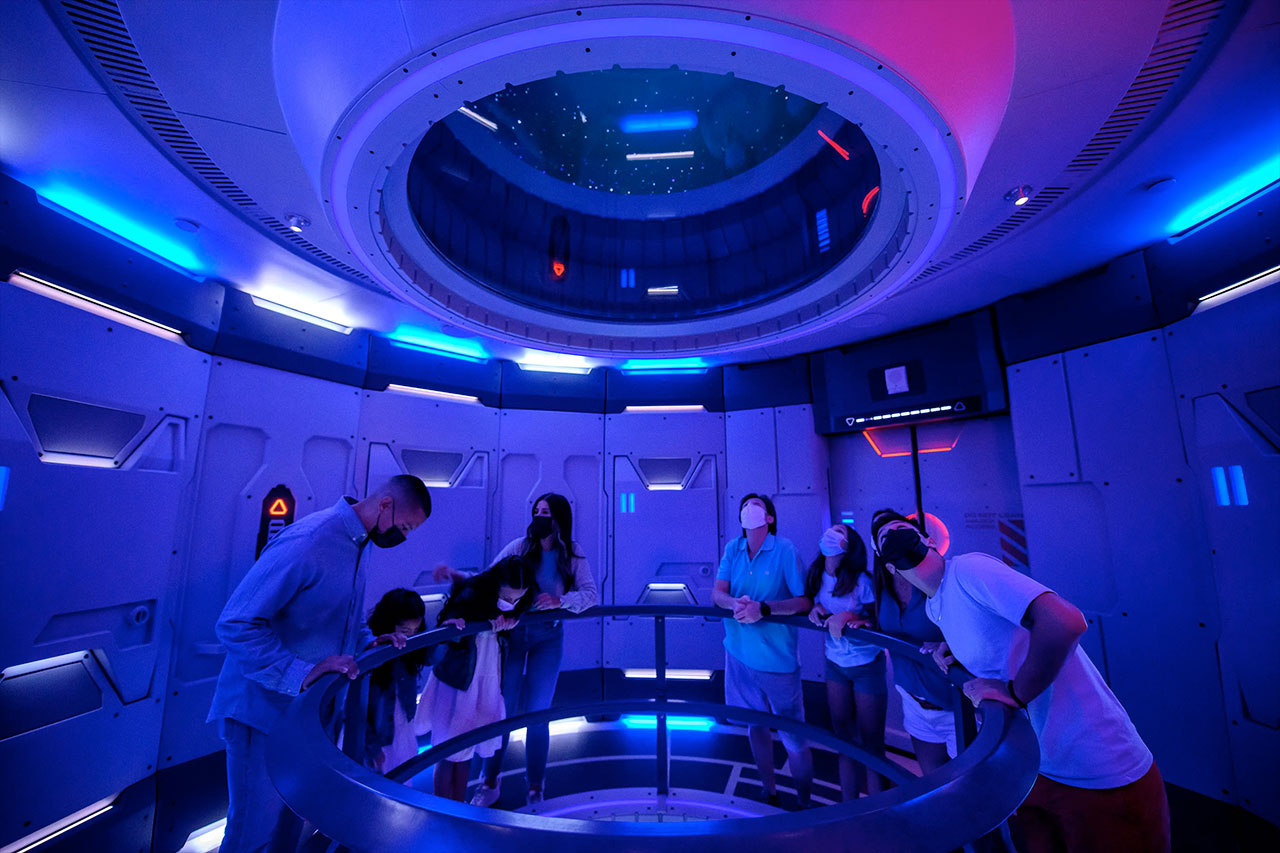
The idea for a space elevator dates back to Soviet-era rocket scientist Konstantin Tsiolkovsky, who first wrote about a tower extending from the ground into orbit in 1895. Since then, the concept has been advanced by other engineers, including work supported by NASA's Marshall Space Flight Center in Alabama and the U.S. agency's Institute for Advanced Concepts.
Several prizes, including NASA's Centennial Challenges, have also been offered for the development of the technologies needed to make space elevators possible.
The altitude that the Space 220 Stellarvator reaches, on which the name of the restaurant is based, is also a reference to real spaceflight, or at least it was when the venue was originally imagined.
"Help ensure a smooth departure as guests blast off to enter the International Space Station suspended 220 miles [354 km] above the Earth's surface," the Patina Restaurant Group wrote in an early job listing in 2019. Since then, Space 220 has moved to the Centauri space station, a fictional destination at the same general height as the real space station. (Centauri is a callback to Horizons, the pavilion that Mission: SPACE replaced, which featured a space station called Brava Centauri.)
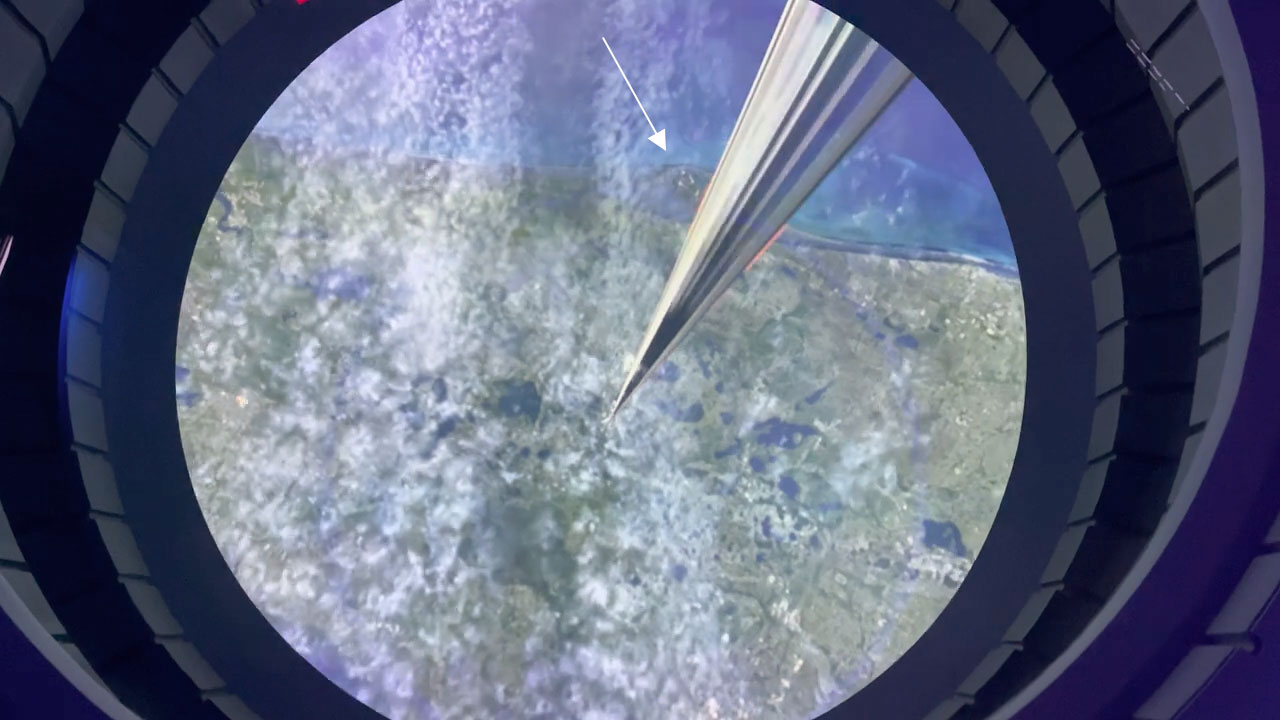
One other thing to note about the Stellarvator — soon after lifting off, guests looking through the viewport on the floor may spot a real launch site. As the east coast of Florida comes into view, NASA's Kennedy Space Center can be seen with its Complex 39A and 39B launch pads and crawlerway leading out to the Vehicle Assembly Building (VAB) visible for a few seconds of the climb into orbit.
The view from orbit
Because the Centauri space station is connected to a space elevator, it is locked over one place on Earth — Epcot to be exact — and so guests do not see Earth rotate below when looking out the windows of Space 220.
But that doesn't mean the planet is static. The appearance of Earth, stretching across most of the continental United States, changes depending on when you are there.
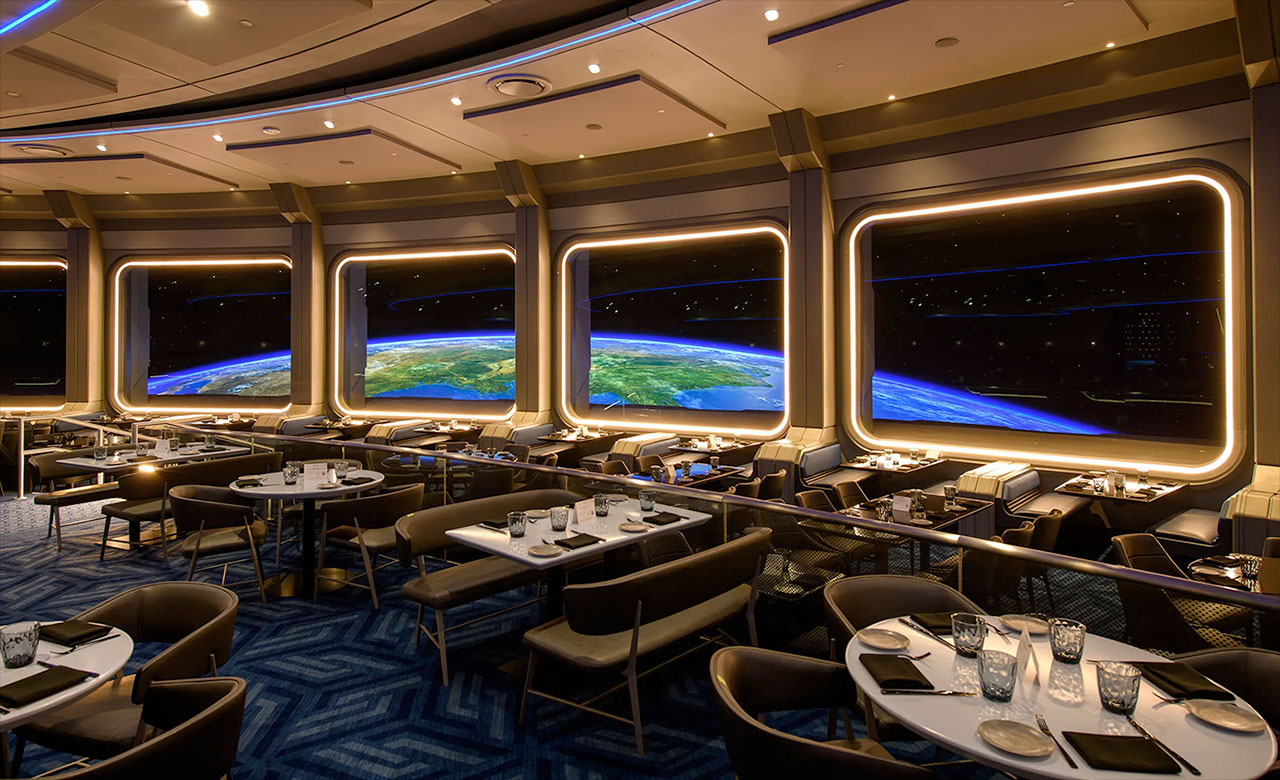
Guests visiting Epcot on an overcast day will see a cloud-covered central Florida when they reach space. Likewise, diners eating dinner on a starry night will have a clear view all the way down to the ground.
"The depictions are live based on the actual weather conditions outside in Florida," a Disney spokesperson confirmed.
Much of the weather data available to update projections like the one in Space 220, is derived from meteorological satellites, such the Geostationary Operational Environmental Satellite Program (GOES) operated by NASA and the National Oceanic and Atmospheric Administration (NOAA).
The view of Earth also changes with the time of day. Depending on when the sun sets outside the restaurant, guests can watch the continent slip into night, with city lights illuminating major population areas.
Earth quiz: Do you really know your planet?
Space food
The Space 220 menu includes many dishes with spacey-sounding names, such as Centauri Caesar Salad and Galactic Lobster Globe. A few of the selections, though, are inspired by or could pass as real space food.
The Space Greens — a delicious salad of bibb lettuce, dried cranberries, roasted pears, spiced pecans and apple cider dressing — comes close to what astronauts could make on the International Space Station.
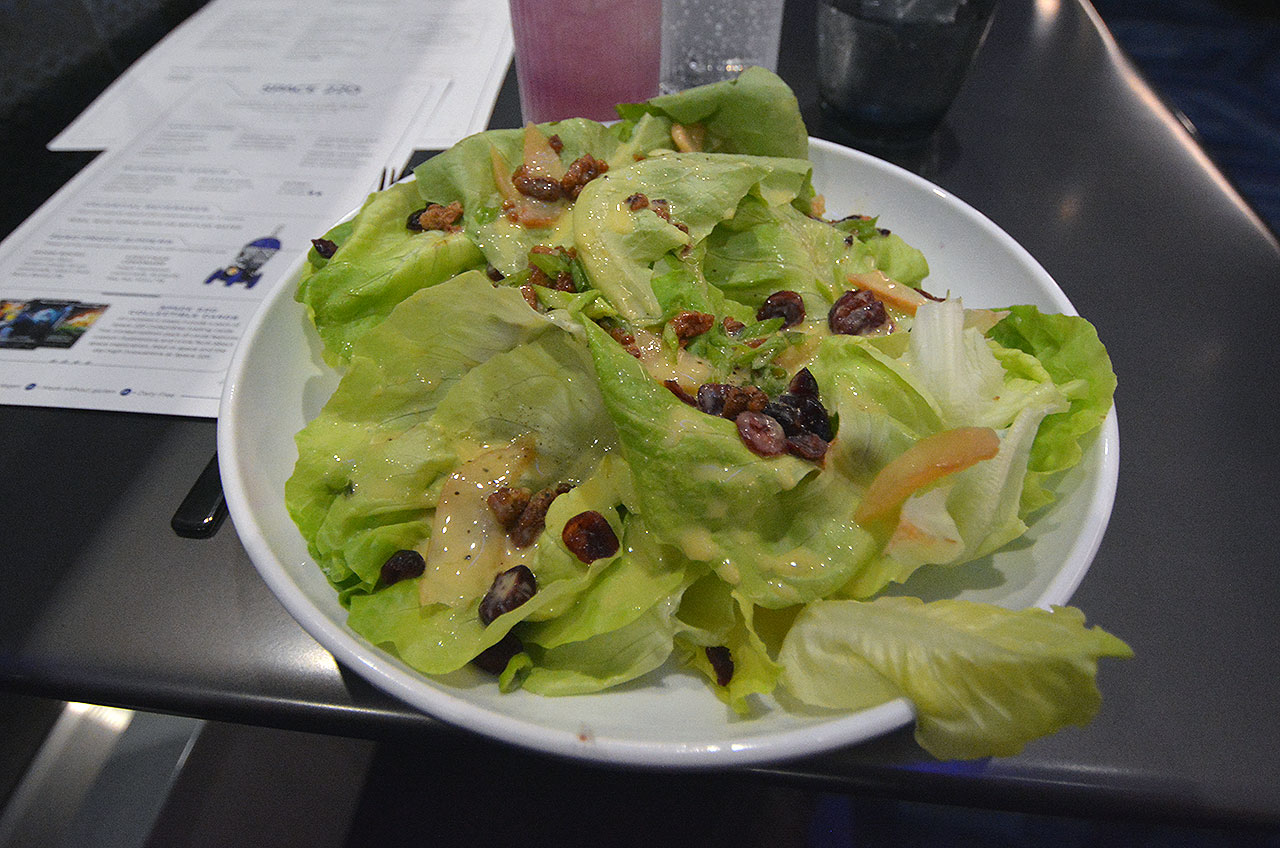
Since 2015, the expedition crews have harvested and snacked on lettuce and other types of crops grown using the Vegetable Production System, or Veggie, on the station. They also have dried fruit and nuts on their supplementary menu.
Guests boarding Centauri walk by a more advanced version of Veggie prior to entering the Space 220 restaurant. Like the space station itself, it is a model, but elsewhere at Epcot, real hydroponic and advanced plant growth facilities are used to produce many of the vegetables served in the theme park's restaurants.
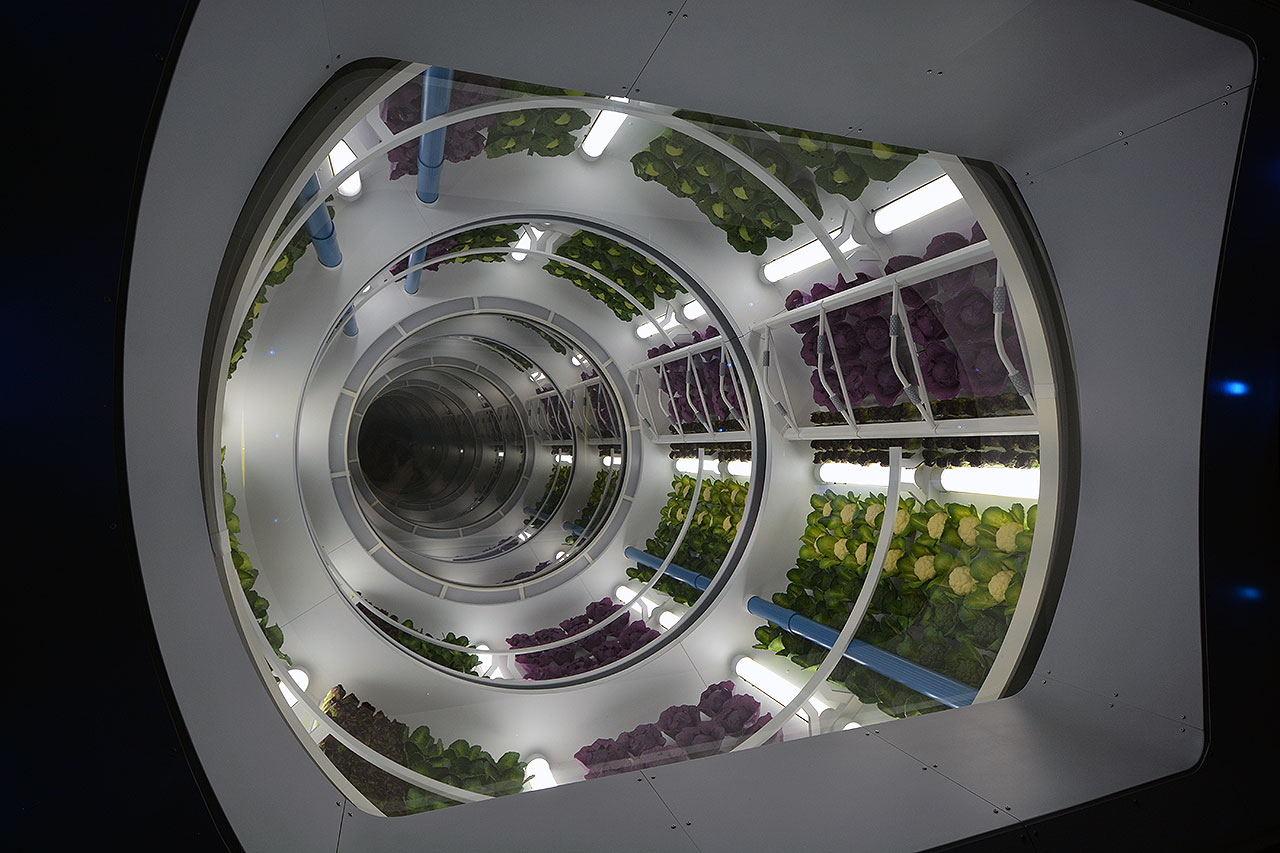
Other Space 220 menu items play off the history of space-related foods.
The Big Tang, one of the "atmospheric spirits" offered at the bar, combines Avion Silver and Grand Marnier with grapefruit, strawberries and Tang-infused agave nectar.
Tang, the powdered citrus drink mix, was not invented by General Foods (now Kraft Foods) for the space program but became the drink of the astronauts after NASA first used it to offset the metallic flavor of its Mercury spacecraft's water supply. Today, the mixes are still consumed on the International Space Station.
The Big Tang is also served with astronaut ice cream as a garnish.
A freeze-dried version of the frozen dessert, astronaut ice cream is a staple of NASA and space museum gift shops. Though not consumed in space, many other freeze-dried foods make up a large part of the astronauts' diets.
Space food evolution: How astronaut chow has changed (photos)
Fly-by factoids
While eating and marveling at the planet below, Space 220 diners may also catch glimpses of others at work and play aboard — or rather outside — space station Centauri. Spacewalkers and visiting spacecraft pass by the restaurant's windows as they come and go from the active outpost.
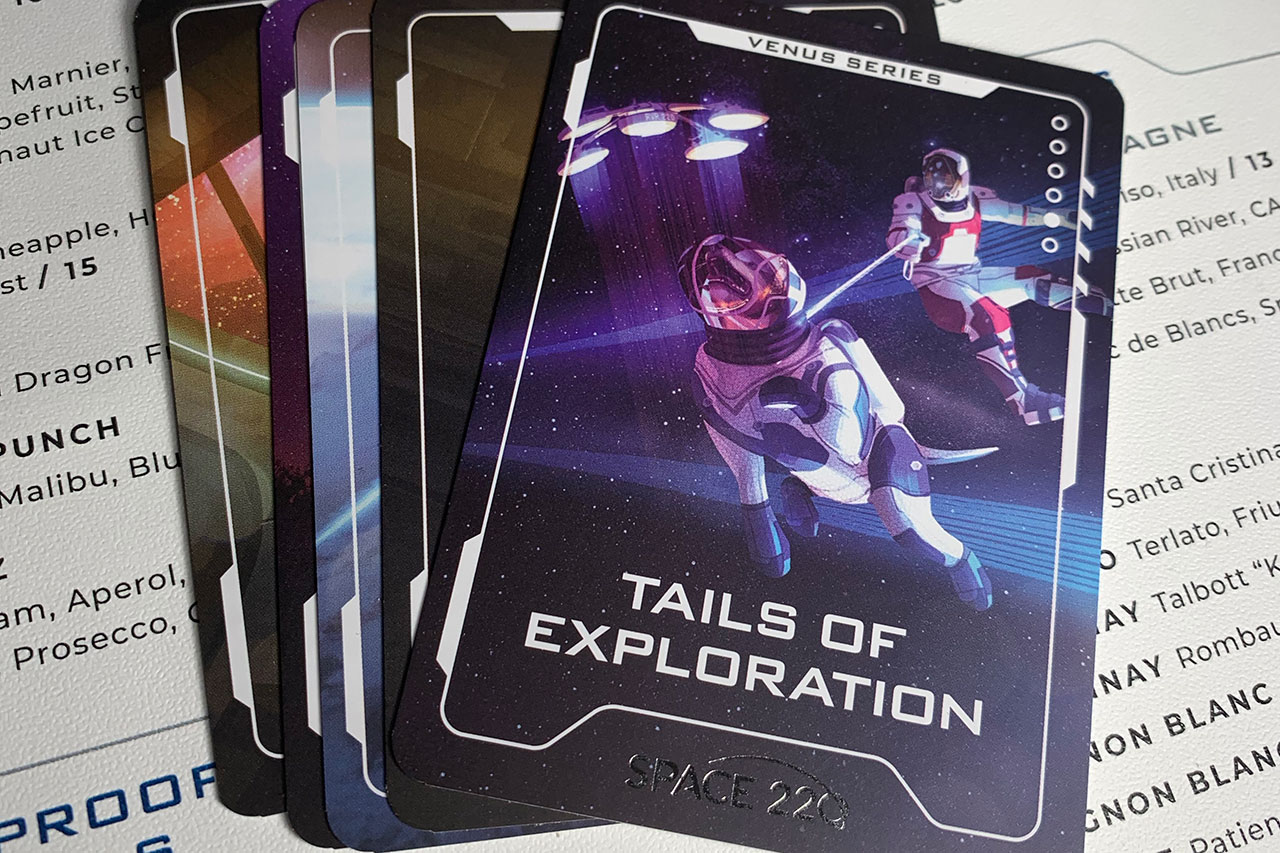
Look carefully and you might see a satellite with a solar panel layout similar to NASA's James Webb Space Telescope (the satellite also doubles as a hidden Mickey). And in between scenes of spacesuited astronauts conversing using sign language and sparring with lightsabers, there may also be the occasional rover, though not the type with wheels.
"Aboard Sputnik 2, a dog named Laika was the first living creature to reach orbit in 1957. Since then, even monkeys and tortoises have reached toward the stars," reads "Tails of Exploration," one of the Space 2020 trading cards given out with kids' meals. "Someday, you may be able to take your best friend on a space flight — just pack lots of treats."
Click through to collectSPACE for a video tour of the Space 220 restaurant at Epcot.
Follow collectSPACE.com on Facebook and on Twitter at @collectSPACE. Copyright 2021 collectSPACE.com. All rights reserved.

Robert Pearlman is a space historian, journalist and the founder and editor of collectSPACE.com, a daily news publication and community devoted to space history with a particular focus on how and where space exploration intersects with pop culture. Pearlman is also a contributing writer for Space.com and co-author of "Space Stations: The Art, Science, and Reality of Working in Space” published by Smithsonian Books in 2018.
In 2009, he was inducted into the U.S. Space Camp Hall of Fame in Huntsville, Alabama. In 2021, he was honored by the American Astronautical Society with the Ordway Award for Sustained Excellence in Spaceflight History. In 2023, the National Space Club Florida Committee recognized Pearlman with the Kolcum News and Communications Award for excellence in telling the space story along the Space Coast and throughout the world.

